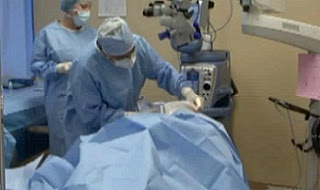Robots are increasingly being used to offer assistance to surgeons during surgery in what is called robotic surgery. Other names used for this surgical approach are computer-assisted and robot-assisted surgery. Less invasive techniques have certain limitations that robot-assisted methods were developed to overcome. Robot-assisted methods also improve possibilities of open surgery. When searching for professionals in robotic surgery Houston should be the best location to consider checking out first.
Robot-assisted surgical procedures offer certain advantages that are not possible to achieve in procedures that do not use robots. For instance, in the former, movement of instruments is not done directly. Instead, two main methods are used to control instruments during the procedure. In one method direct telemanipulator is used while in the other method computer control is used.
The use of telemanipulators involves the surgeon making normal movement that relate to the surgical procedure while manipulators and end-effectors in robotic arms effect the movements. The arms effect those movements on actual patients. Telemanipulator is a remote manipulator of some sort. In computer-controlled systems, robotic arms are controlled through computers. The use of telemanipulators and computer-controlled systems together is possible.
Computer-controlled systems can be integrated into telemanipulators to achieve even higher possibilities. However, computer-controlled systems offer certain advantages when used alone. One of the most important advantage is that the surgeon does not need to be present physically during the procedure. They can do it while away, something that has opened the eyes of surgeons to the possibility of remote surgery.
Several advantages are associated with this surgical approach that make it to be pursued even more. According to surgeons who have used this method, they report that there is increased flexibility, precision, and control during the operation. Increased control, precision, and flexibility allows surgeons to see the site better. This method also allows for the performance of complex and delicate procedures that are impossible or very dangerous with other methods.
It is increasingly possible to do less invasive surgery when robots are used. Cardio thoracic procedures and other procedures that have not benefitted from less invasive methods can now benefit from when robots are used. Less invasive techniques offer benefits like smaller, less visible scars, less blood loss, fewer complications, less pain, and quicker recovery. Infections rarely happen when robots are used to assist in procedures, but it can still happen in some cases.
Not every individual is a suitable candidate for this method. As a result, one should discuss with their doctor about regarding the benefits and risks presented by the method in addition to other options one can settle for. In some cases, traditional minimally invasive methods are a better option. However, in cases where robot-assisted procedures prove to be better, they should be used.
Robot-assisted surgery is adopted variably in the US. The adoption is usually governed by certain factors, which include equipment availability, cultural factors, and physician training. Culturally, institutions maintain a culture regarding the use of robots in their procedure with preference going to traditional methods. In such institutions, conventional less invasive methods are given preference.
Robot-assisted surgical procedures offer certain advantages that are not possible to achieve in procedures that do not use robots. For instance, in the former, movement of instruments is not done directly. Instead, two main methods are used to control instruments during the procedure. In one method direct telemanipulator is used while in the other method computer control is used.
The use of telemanipulators involves the surgeon making normal movement that relate to the surgical procedure while manipulators and end-effectors in robotic arms effect the movements. The arms effect those movements on actual patients. Telemanipulator is a remote manipulator of some sort. In computer-controlled systems, robotic arms are controlled through computers. The use of telemanipulators and computer-controlled systems together is possible.
Computer-controlled systems can be integrated into telemanipulators to achieve even higher possibilities. However, computer-controlled systems offer certain advantages when used alone. One of the most important advantage is that the surgeon does not need to be present physically during the procedure. They can do it while away, something that has opened the eyes of surgeons to the possibility of remote surgery.
Several advantages are associated with this surgical approach that make it to be pursued even more. According to surgeons who have used this method, they report that there is increased flexibility, precision, and control during the operation. Increased control, precision, and flexibility allows surgeons to see the site better. This method also allows for the performance of complex and delicate procedures that are impossible or very dangerous with other methods.
It is increasingly possible to do less invasive surgery when robots are used. Cardio thoracic procedures and other procedures that have not benefitted from less invasive methods can now benefit from when robots are used. Less invasive techniques offer benefits like smaller, less visible scars, less blood loss, fewer complications, less pain, and quicker recovery. Infections rarely happen when robots are used to assist in procedures, but it can still happen in some cases.
Not every individual is a suitable candidate for this method. As a result, one should discuss with their doctor about regarding the benefits and risks presented by the method in addition to other options one can settle for. In some cases, traditional minimally invasive methods are a better option. However, in cases where robot-assisted procedures prove to be better, they should be used.
Robot-assisted surgery is adopted variably in the US. The adoption is usually governed by certain factors, which include equipment availability, cultural factors, and physician training. Culturally, institutions maintain a culture regarding the use of robots in their procedure with preference going to traditional methods. In such institutions, conventional less invasive methods are given preference.

No comments:
Post a Comment